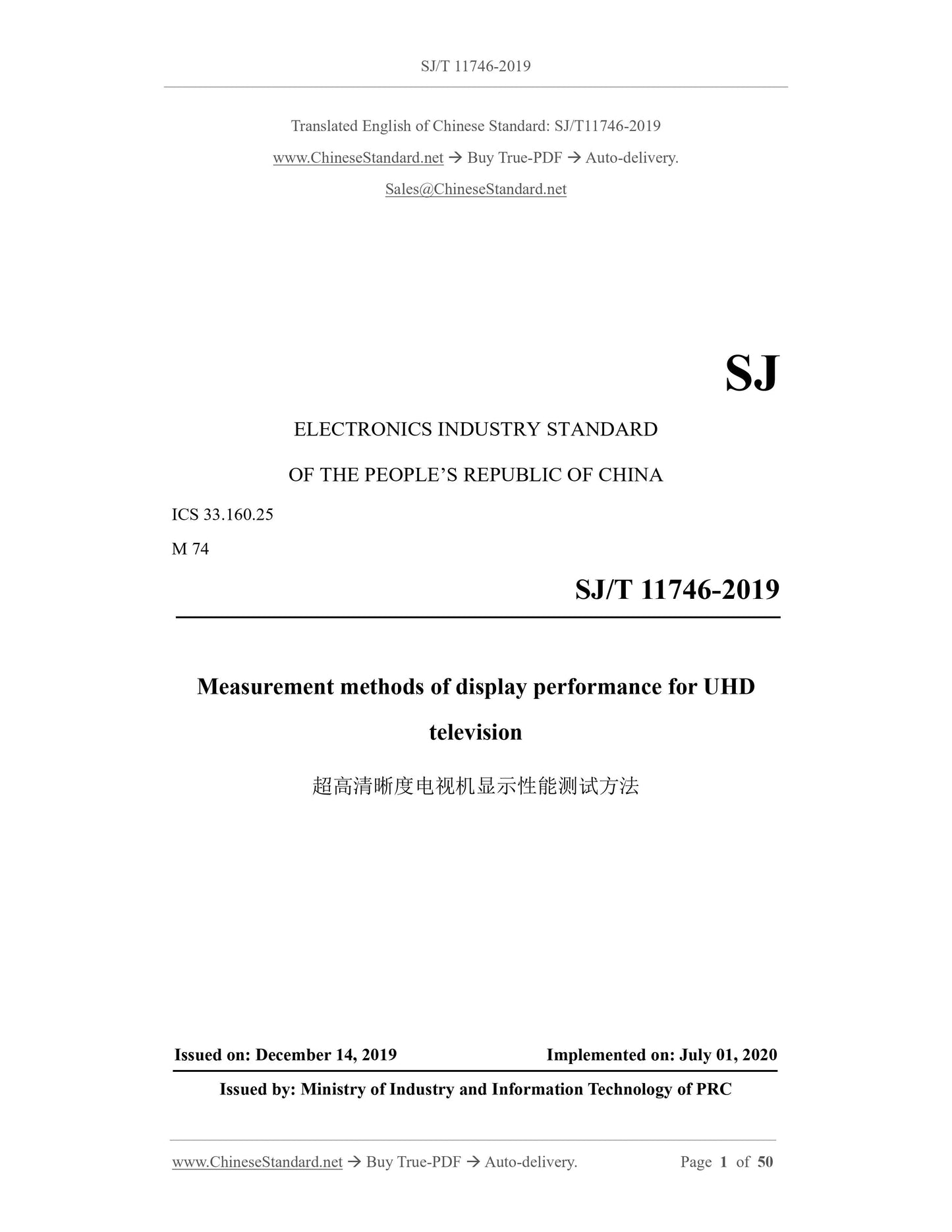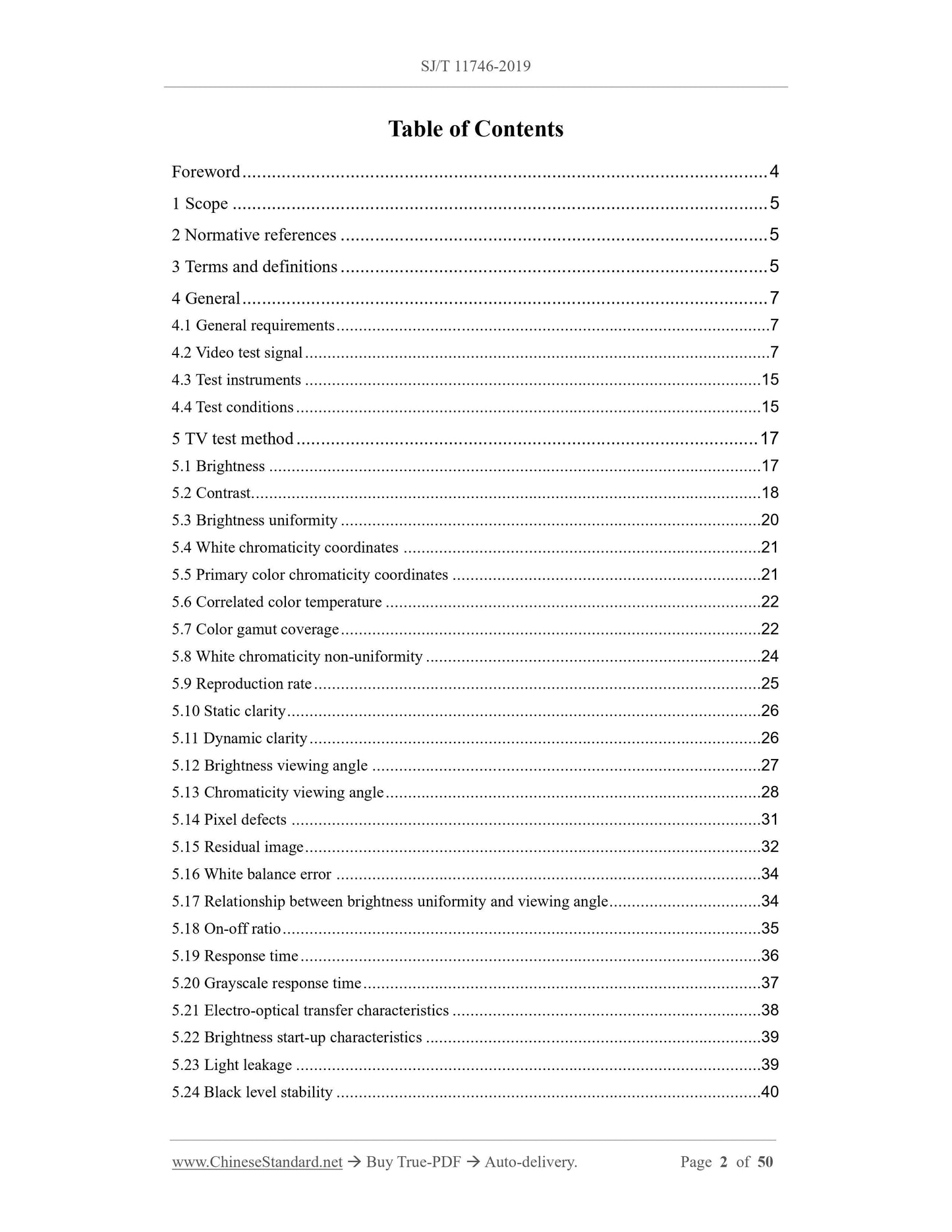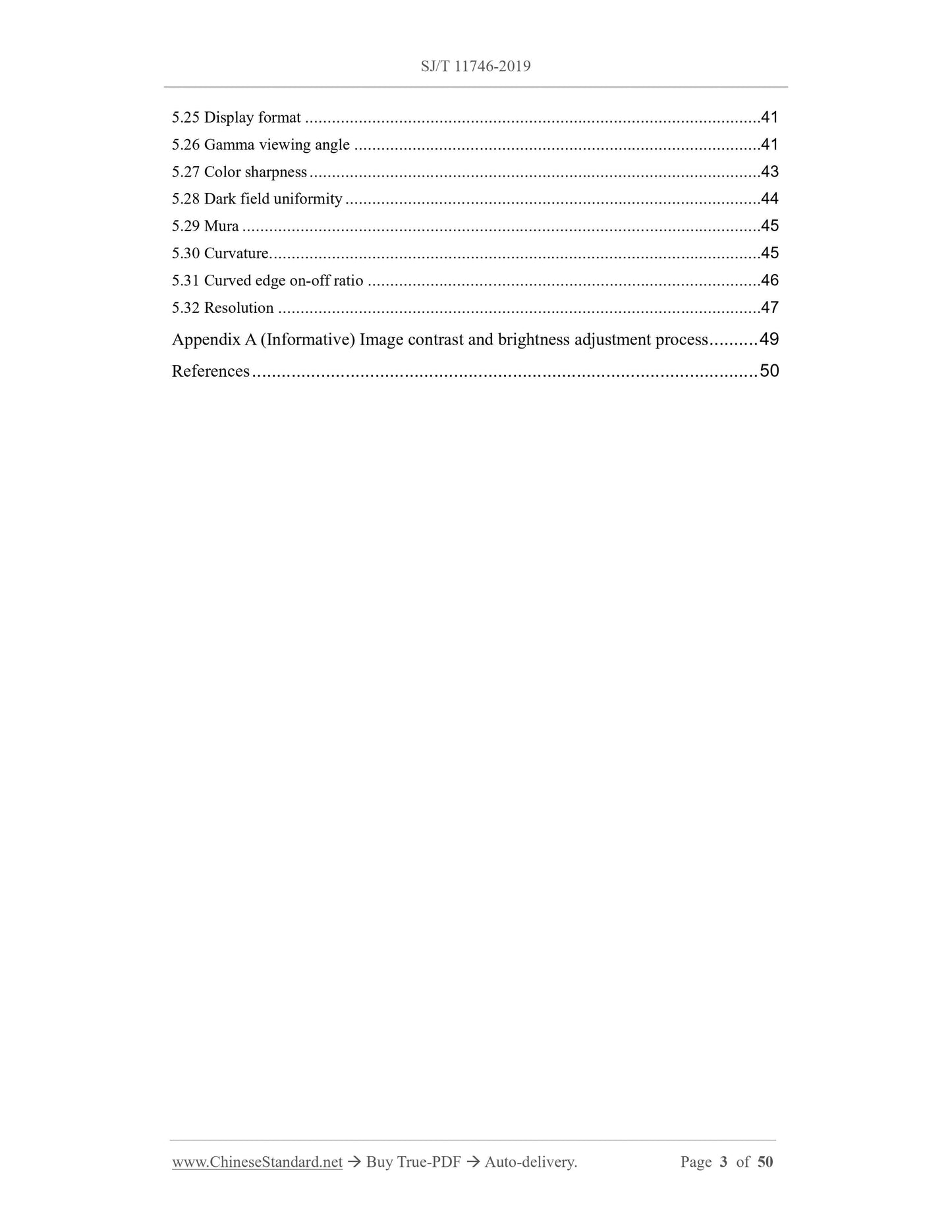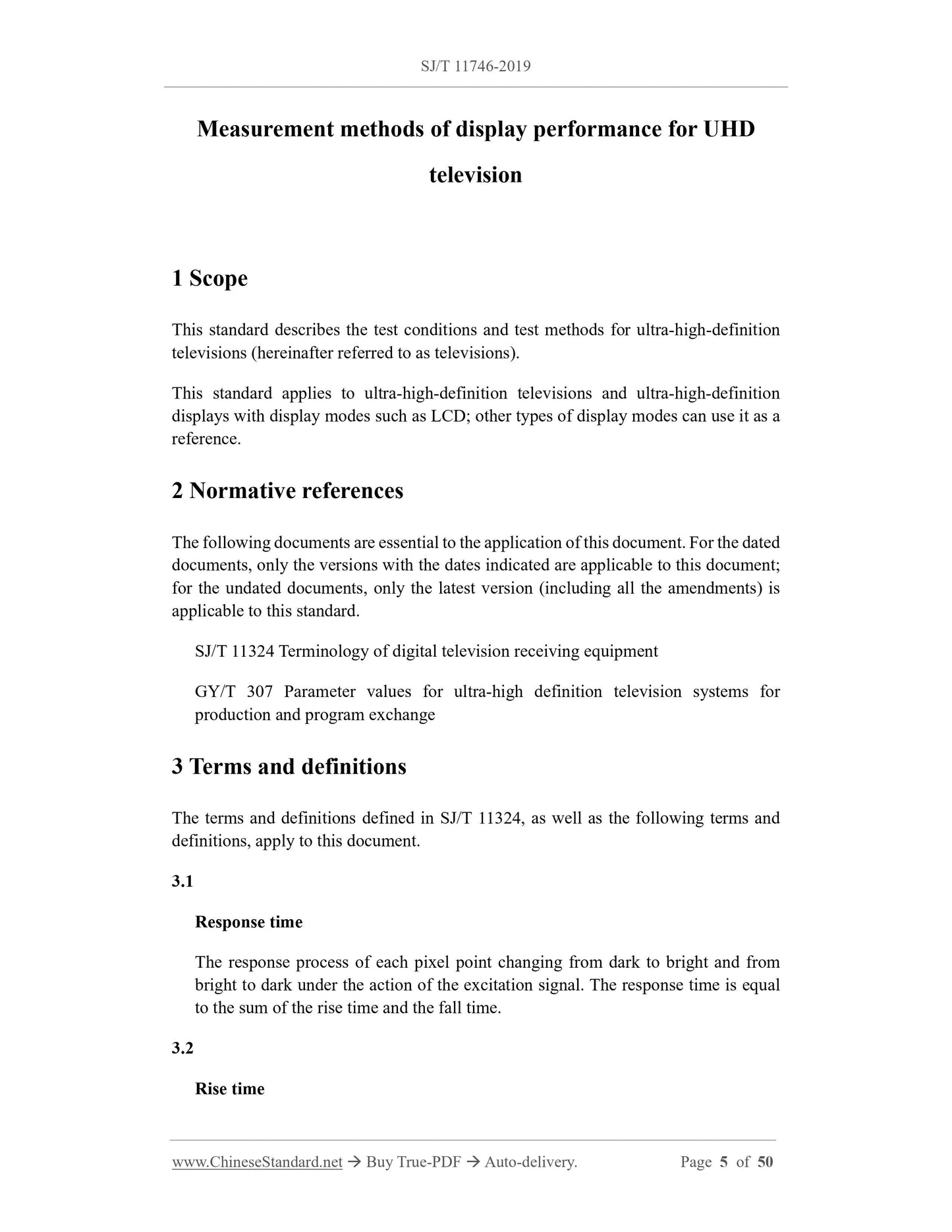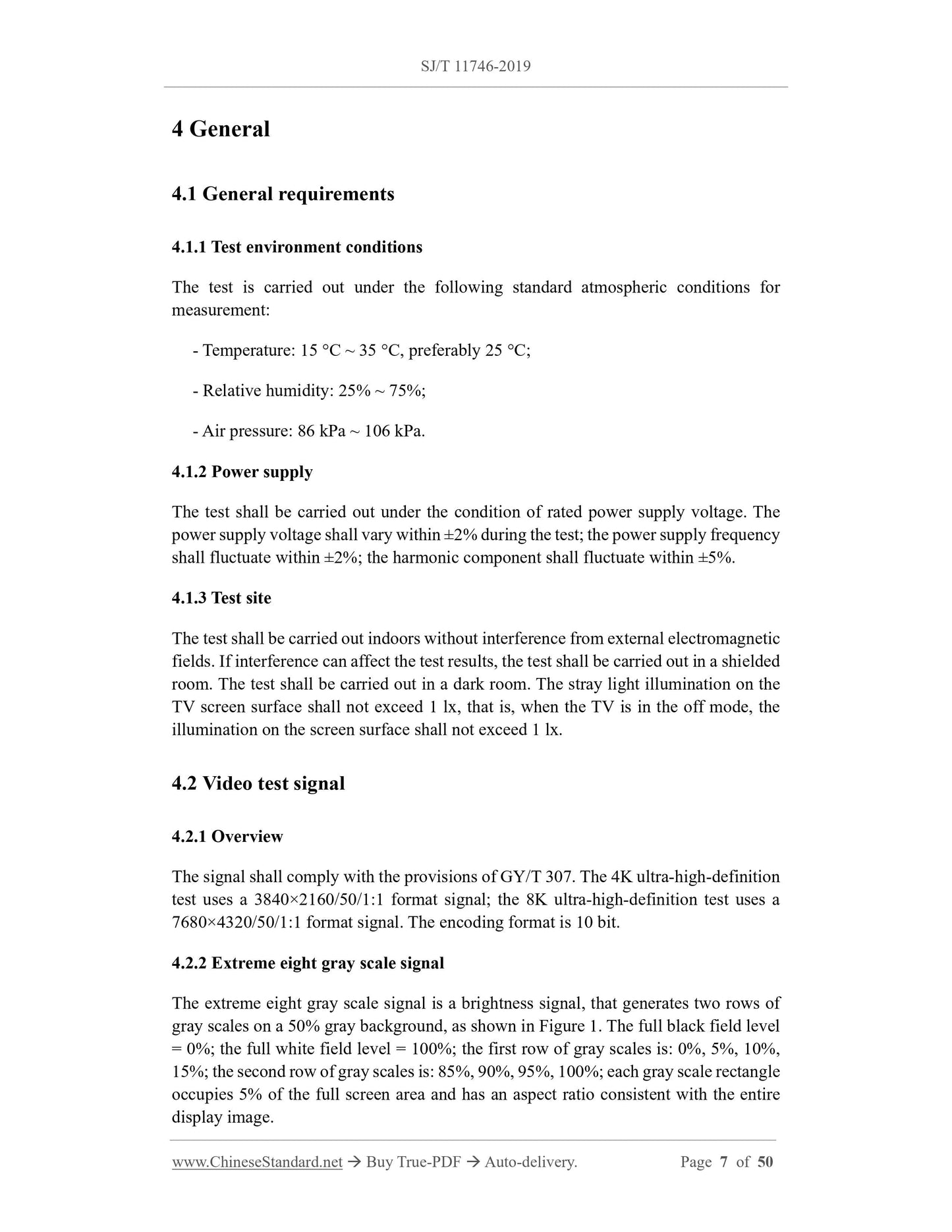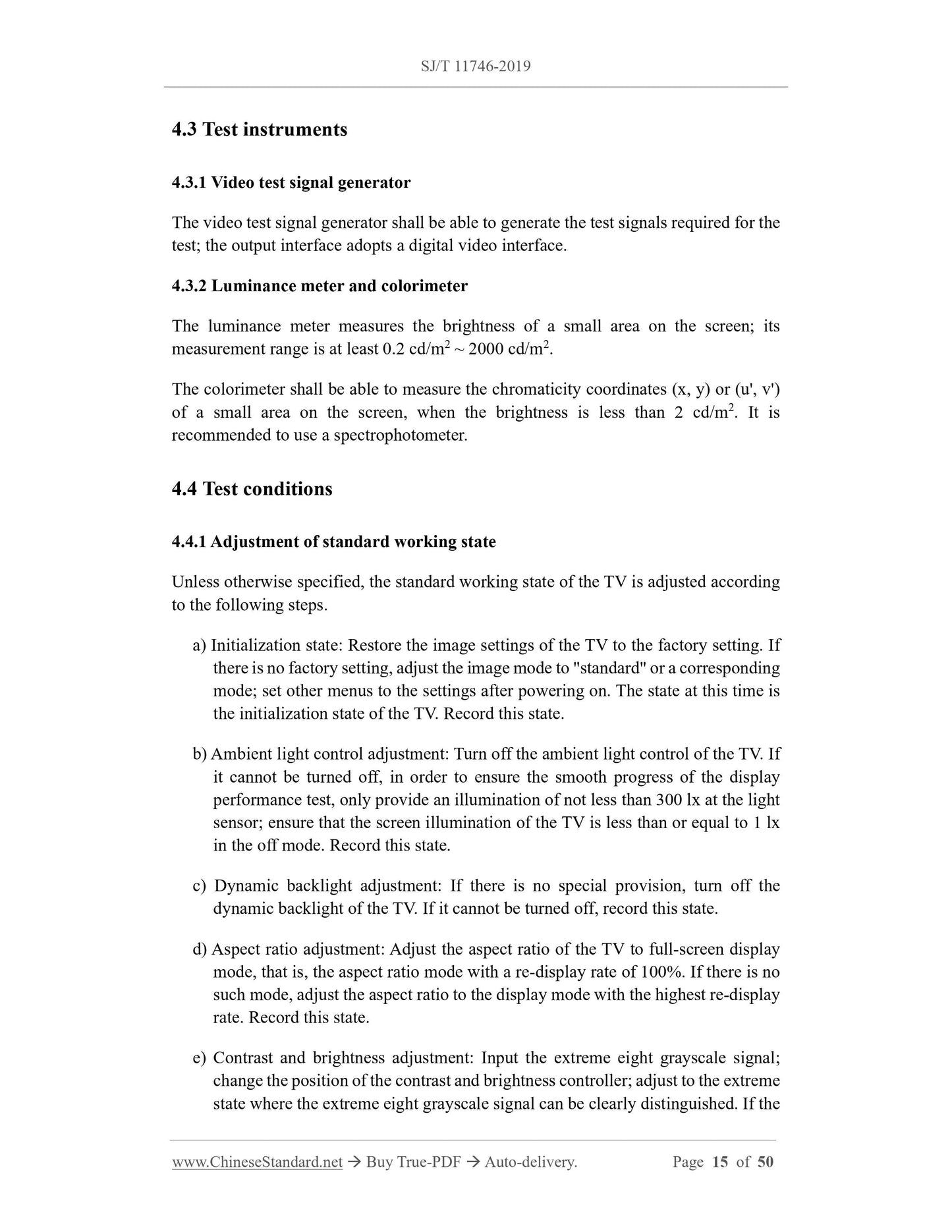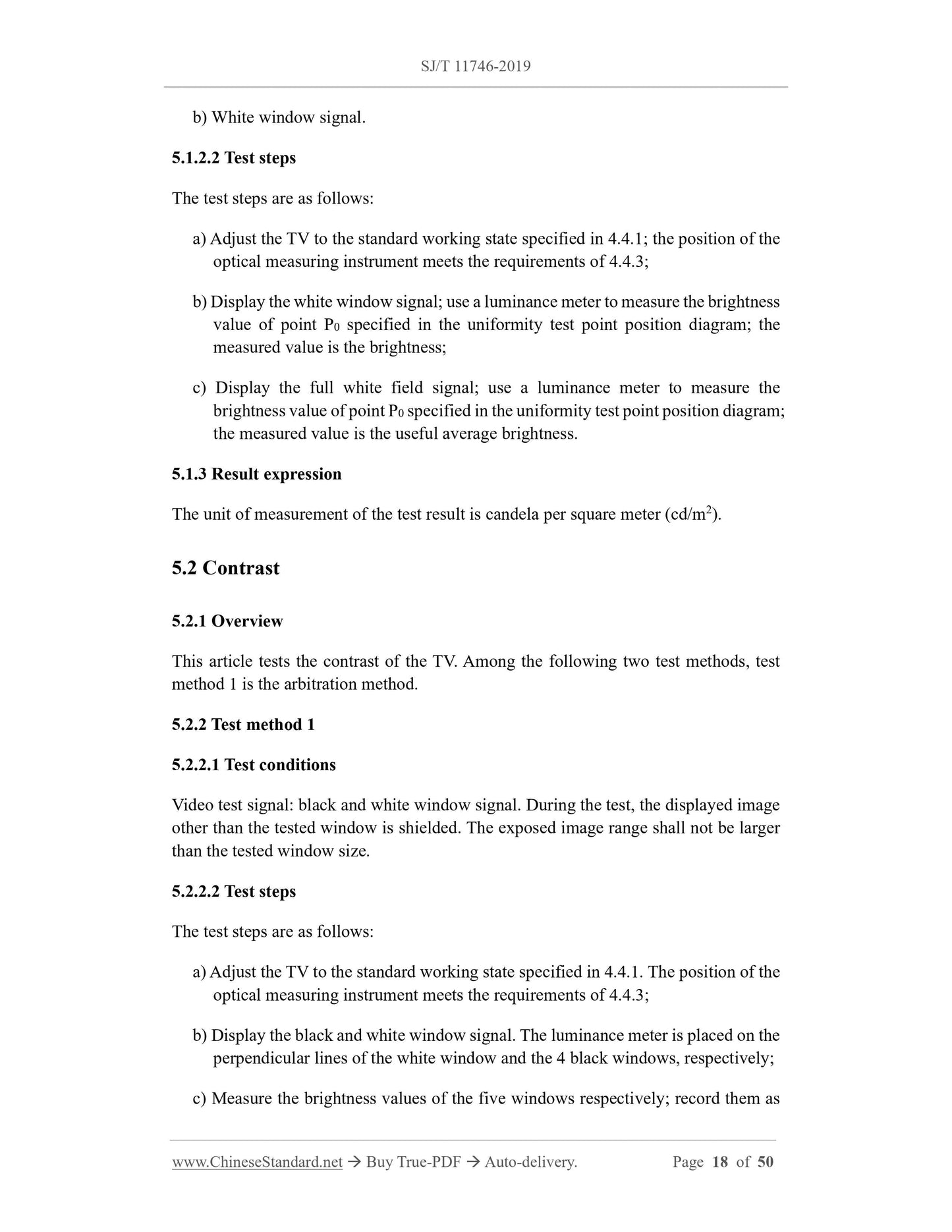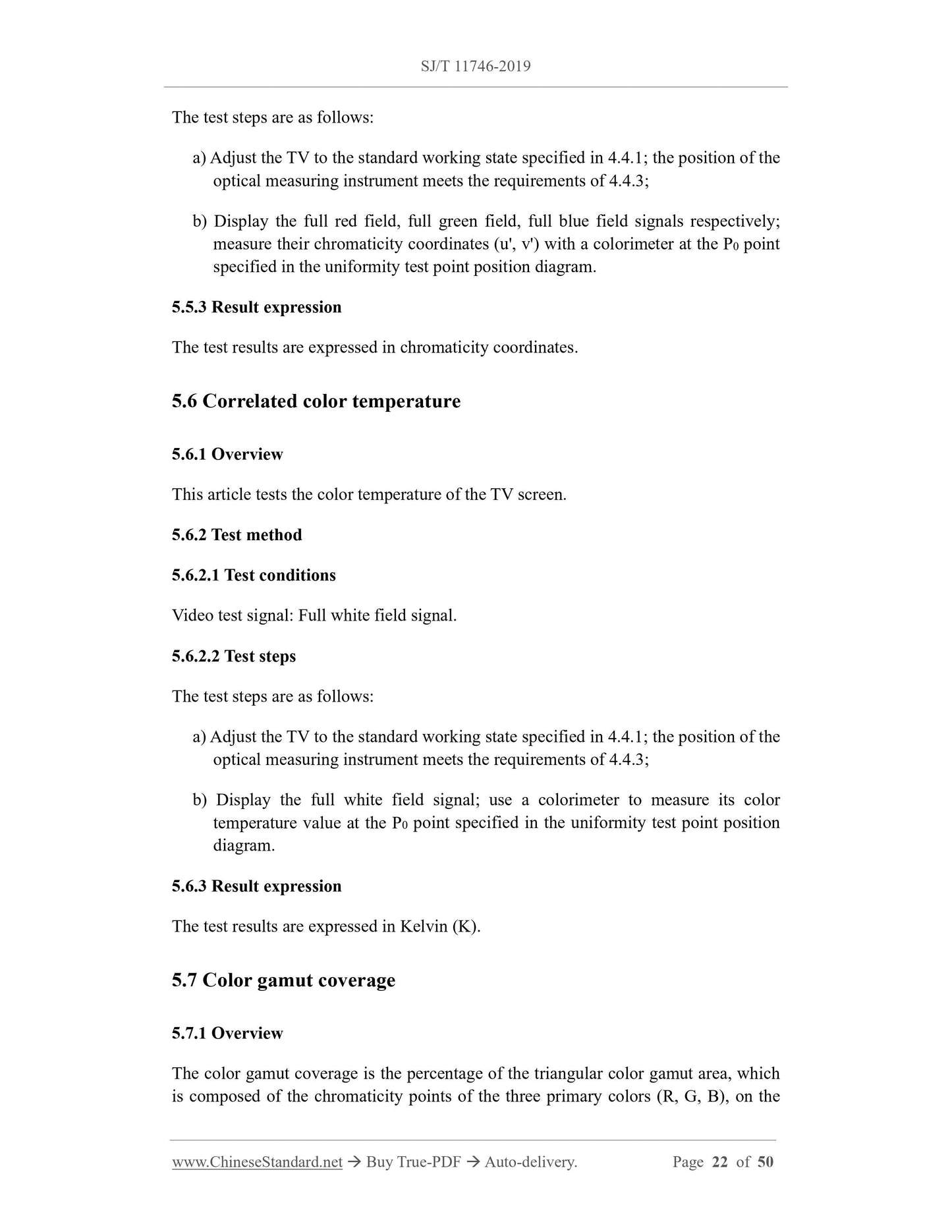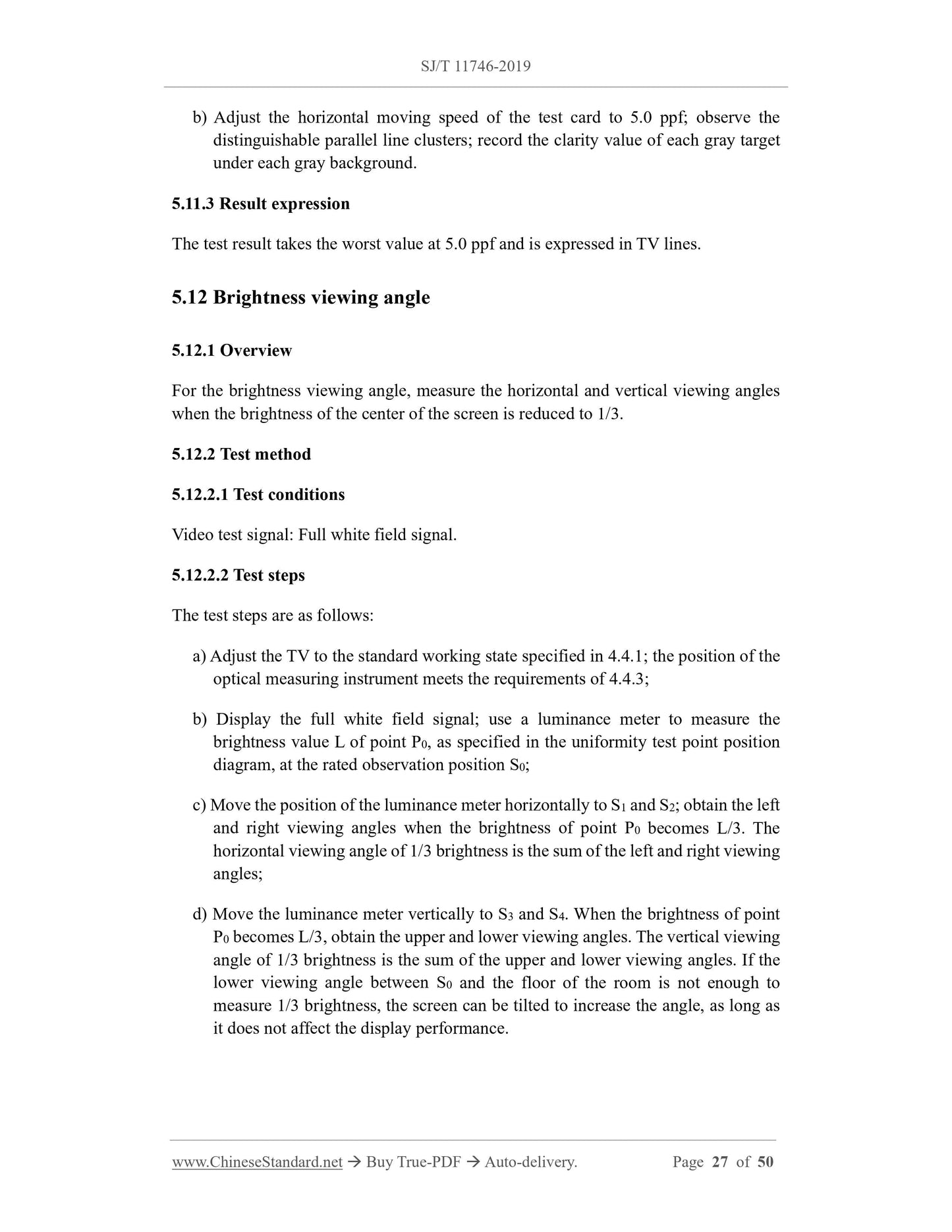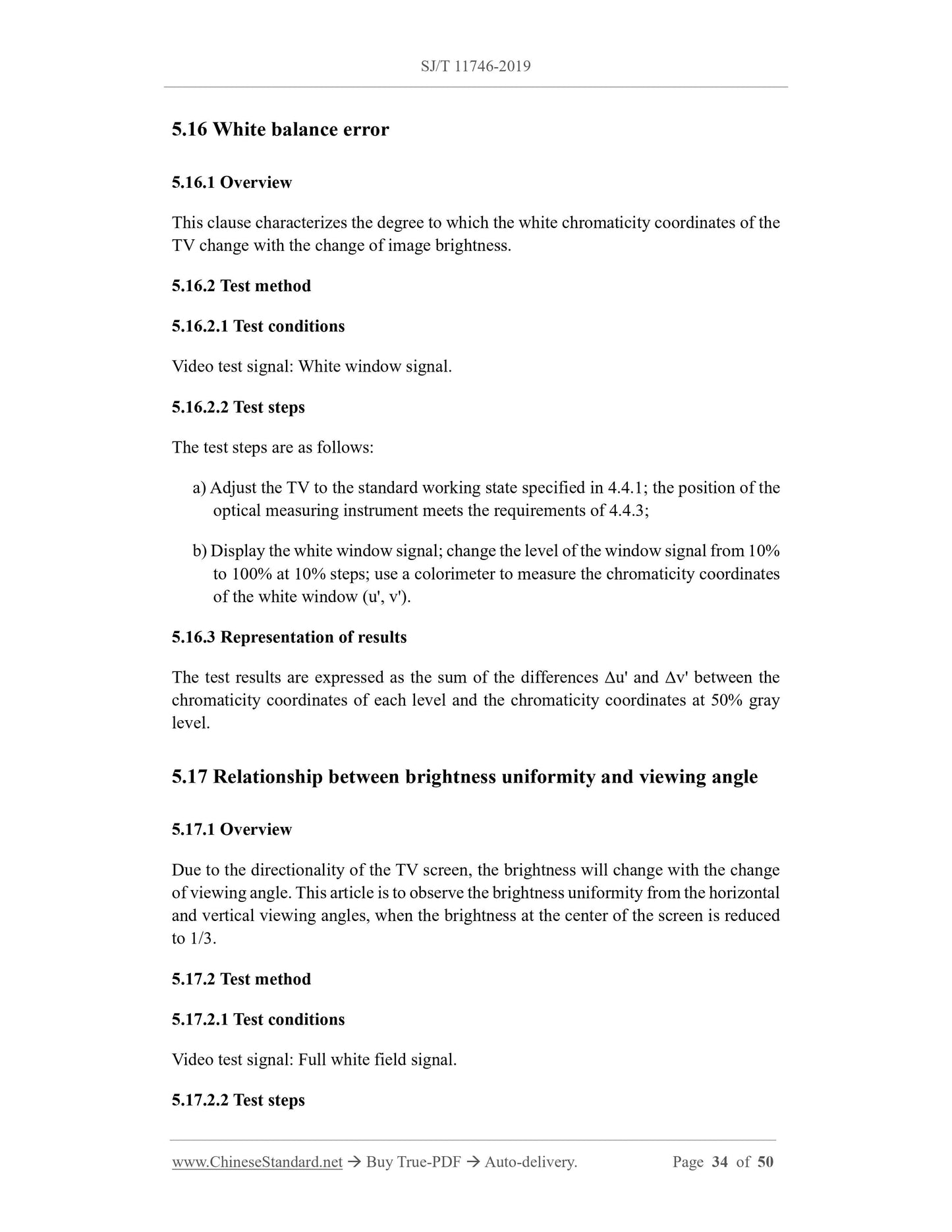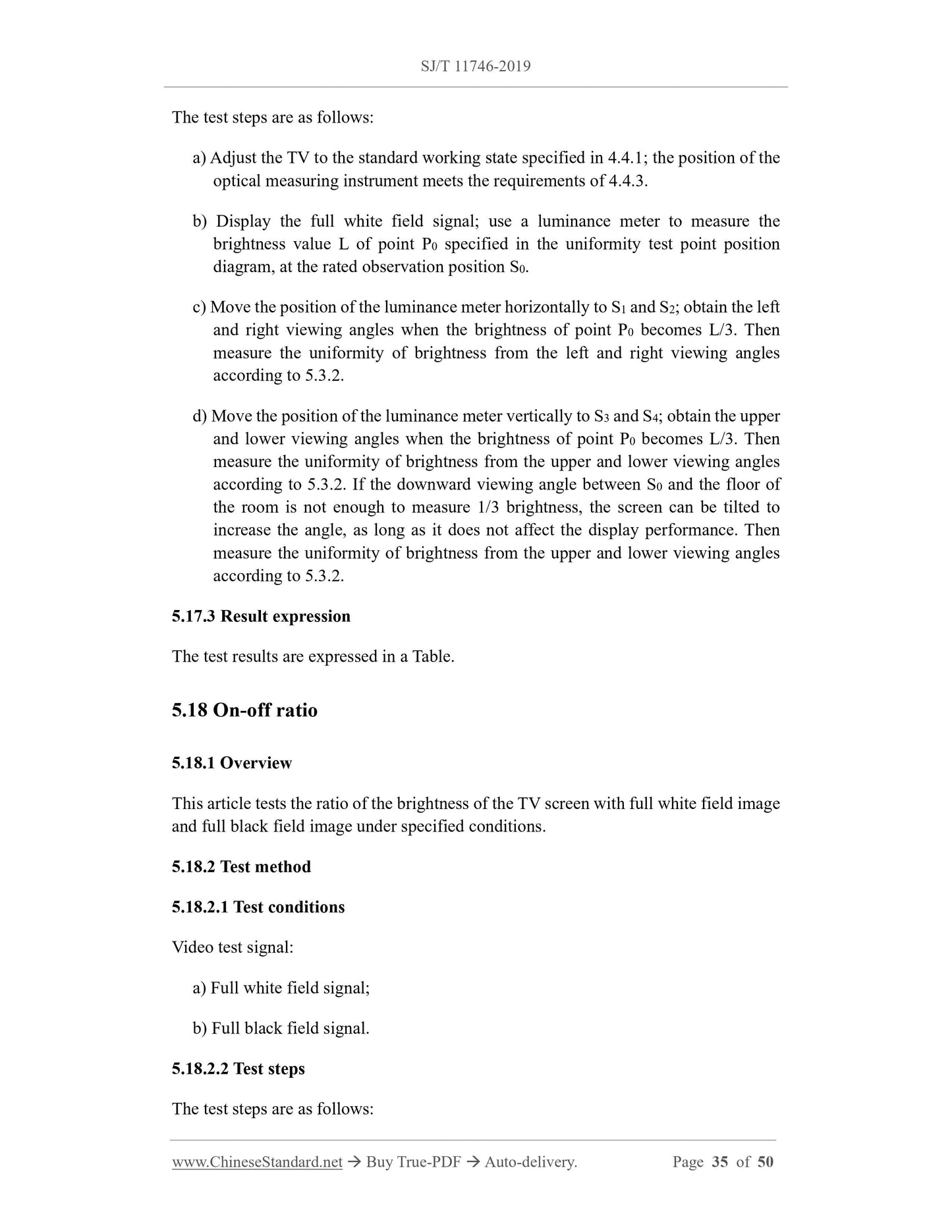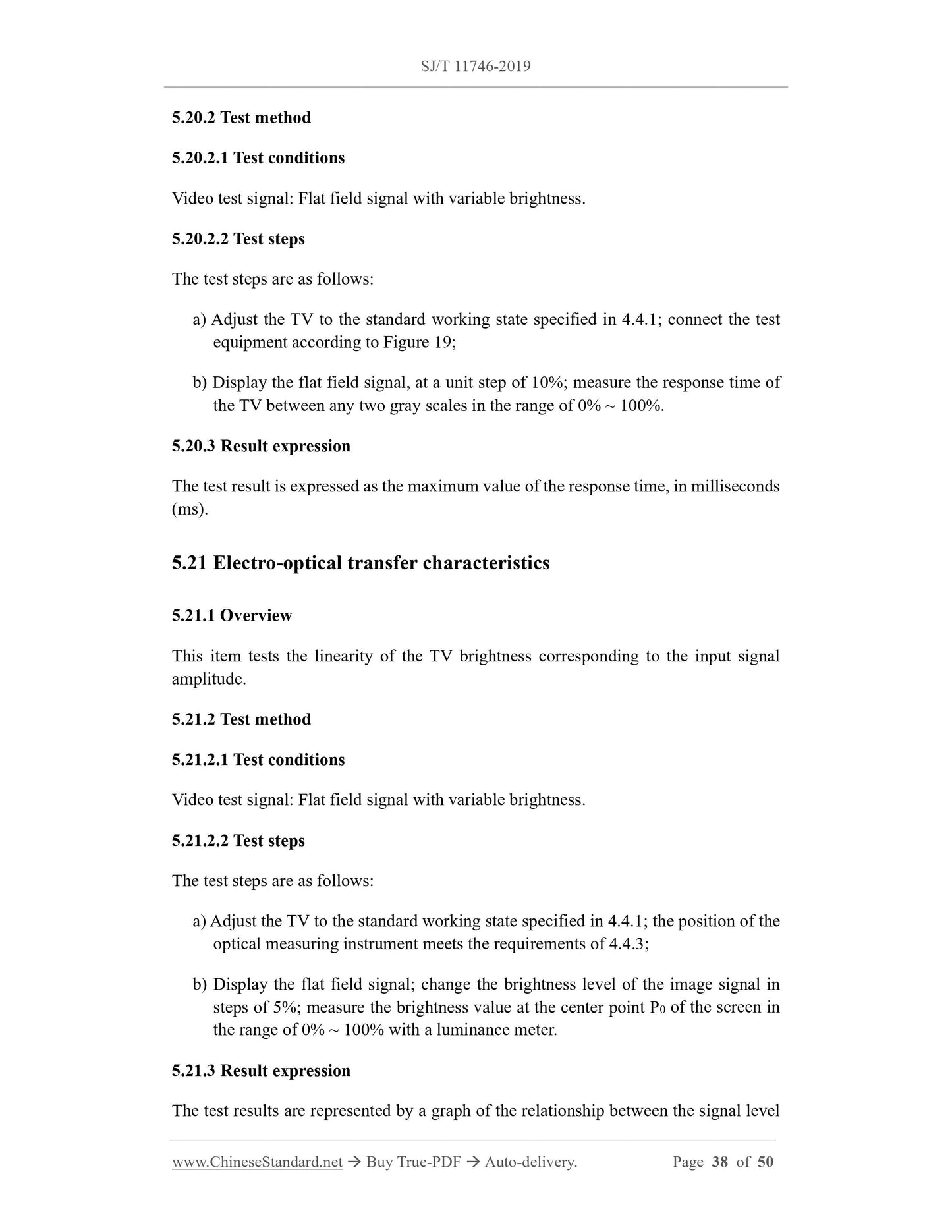1
/
of
12
www.ChineseStandard.us -- Field Test Asia Pte. Ltd.
SJ/T 11746-2019 English PDF (SJ/T11746-2019)
SJ/T 11746-2019 English PDF (SJ/T11746-2019)
Regular price
$670.00
Regular price
Sale price
$670.00
Unit price
/
per
Shipping calculated at checkout.
Couldn't load pickup availability
SJ/T 11746-2019: Measurement methods of display performance for UHD television
Delivery: 9 seconds. Download (and Email) true-PDF + Invoice.Get Quotation: Click SJ/T 11746-2019 (Self-service in 1-minute)
Newer / historical versions: SJ/T 11746-2019
Preview True-PDF
Scope
This standard describes the test conditions and test methods for ultra-high-definitiontelevisions (hereinafter referred to as televisions).
This standard applies to ultra-high-definition televisions and ultra-high-definition
displays with display modes such as LCD; other types of display modes can use it as a
reference.
Basic Data
| Standard ID | SJ/T 11746-2019 (SJ/T11746-2019) |
| Description (Translated English) | Measurement methods of display performance for UHD television |
| Sector / Industry | Electronics Industry Standard (Recommended) |
| Classification of Chinese Standard | M74 |
| Classification of International Standard | 33.160.25 |
| Word Count Estimation | 40,483 |
| Date of Issue | 2019 |
| Date of Implementation | 2020-07-01 |
| Issuing agency(ies) | Ministry of Industry and Information Technology |
| Summary | This standard specifies the test conditions and test methods for ultra-high-definition televisions. It is applicable to ultra-high-definition televisions and ultra-high-definition monitors with LCD and other display methods. Other types of display methods can be used as a reference. |
Share
